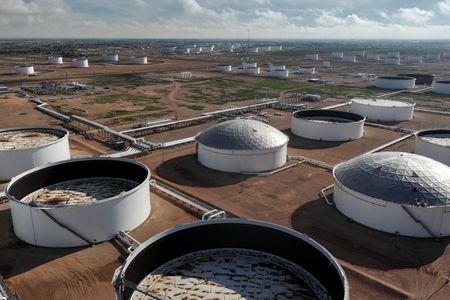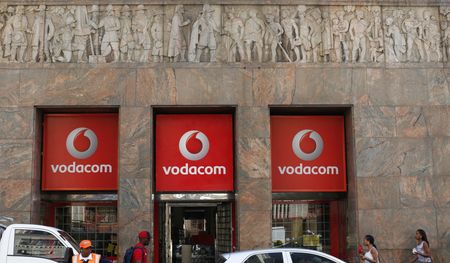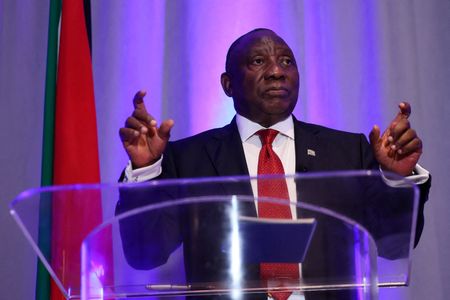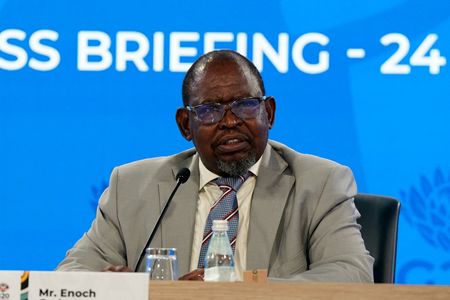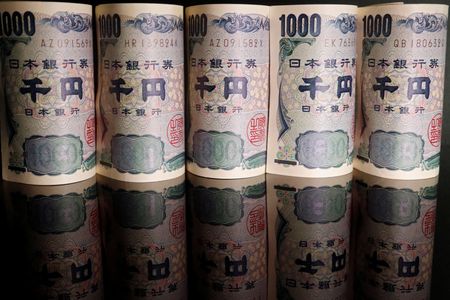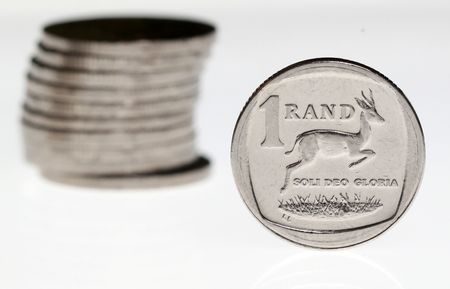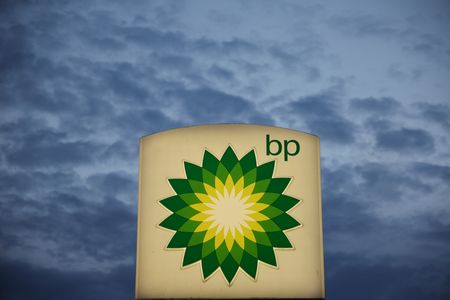By Scott DiSavino
NEW YORK (Reuters) -Oil prices edged up to a two-week high on Tuesday as positive U.S. economic news, lower U.S. oil production and rising demand for oil products countered OPEC+ output increases and worries U.S. tariffs could reduce energy demand.
Brent crude futures rose 88 cents, or 1.3%, to $70.46 a barrel at 1:07 p.m. EDT (1707 GMT), while U.S. West Texas Intermediate (WTI) crude rose 75 cents, or 1.1%, to $68.68.
That put both crude benchmarks on track for their highest closes since June 23 for a second day in a row.
U.S. consumers’ outlook on inflation was little changed last month as households upgraded their views on the state of their finances and ability to get credit, according to a report released on Tuesday by the New York Federal Reserve.
Central banks like the U.S. Fed use interest rates to keep inflation in check. Lower interest rates can spur economic growth and demand for oil by reducing consumer borrowing costs.
The U.S. will produce less oil in 2025 than previously expected as declining oil prices have prompted U.S. producers to slow activity this year, according to the latest U.S. Energy Information Administration outlook.
In Asia, meanwhile, powerhouse economies Japan and South Korea said on Tuesday they would try to negotiate with the U.S. to soften the impact of sharply higher tariffs that U.S. President Donald Trump now plans to impose from the start of August.
Trump ramped up his trade war again on Monday, telling 14 nations that they would face tariffs ranging from 25% for countries including Japan and South Korea, to 40% for Laos and Myanmar.
Trump’s tariffs have raised uncertainty across the market and concerns that they could have a negative effect on the global economy and oil demand.
In Germany, the biggest economy in Europe, exports fell more than expected in May, data showed on Tuesday, as demand from the U.S. dropped for the second consecutive month due to the impact of tariffs.
OPEC+ UNWINDING OUTPUT CUTS
While prices seem to be pressured by OPEC+ unwinding its voluntary output cuts, tightness in middle distillates and Houthi attacks on cargo ships are supporting the market, said Janiv Shah, an analyst at energy consultancy Rystad Energy.
Energy traders noted rising prices for U.S. gasoline and diesel in recent weeks have boosted the diesel crack spread to its highest since March 2025 and the 3:2:1- crack spread to its highest in six weeks. Crack spreads measure refining profit margins.
“The energy complex appears well supported as underscored by its ability to not only shrug off the larger than expected OPEC production intentions for next month but to advance … yesterday in the face of the OPEC headlines,” analysts at energy advisory firm Ritterbusch and Associates said in a note.
On Saturday, the OPEC+ group comprising the Organization of the Petroleum Exporting Countries (OPEC) and its allies, like Russia, agreed to raise production by 548,000 barrels per day (bpd) in August, exceeding the 411,000 bpd increases in the previous three months.
The producer group is set to approve an increase of about 550,000 bpd for September when it meets on August 3, sources told Reuters, which would unwind all of the cuts.
(Reporting by Scott DiSavino and Stephanie Kelly in New York, Seher Dareen and Paul Carsten in London, and Jeslyn Lerh in Singapore; Editing by David Goodman, Mark Potter, Emelia Sithole-Matarise and Joe Bavier)

